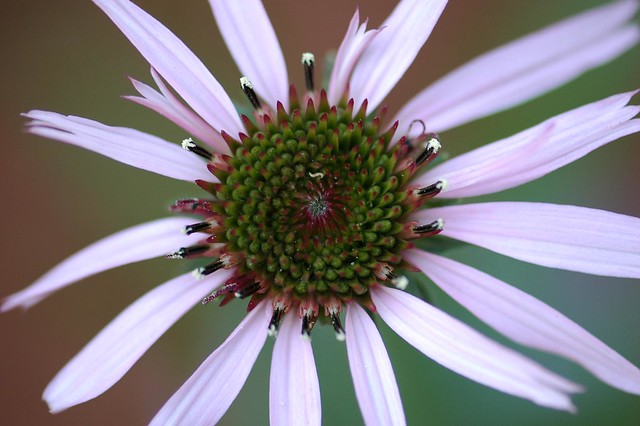Echinacea pallida, Pale Coneflower, growing in my urban backyard native plant garden.
I was appalled to see the National Wildlife Federation publish on their Web site, without qualification or counter-point, a press piece by the “Brand Manager for American Beauties Native Plants.” (Appalled, but unfortunately, not shocked, given NWF’s mishandling of their Monsanto-Scotts-MiracleGro sell-out, and their ham-handed retraction only in the face of public outrage and opposition.)
The Brand Manager’s puff piece includes this statement:
At American Beauties Native Plants, we take a slightly broader view in our definition of native plants–we include cultivars. A cultivar is a plant that has been selected and cultivated because of some unique quality, such as disease resistance, cold hardiness, height, flower form or color. Sometimes interesting varieties are found in nature and brought into cultivation making them cultivated varieties or cultivars. In my years as a research horticulturist I observed pollinators, birds and other wildlife interacting freely with cultivated plants.
This paragraph is immediately followed by a photograph of “[Echinacea] ‘Tiki Torch’ is a hybrid of Echinacea paradoxa and a cultivar of Echinacea purpurea.”
A cultivar is a vegetatively propagated selection – a clone – of an individual from a population. But a hybrid is not a cultivar. More than that, ‘Tiki Torch’ is a patented plant. By definition, anything that is patented must be man-made, NOT natural, not native. One cannot obtain a patent on something that occurs naturally in the wild, even if you select it, propagate, and promote it as a cultivar. American Beauties greenwashing “native” with so broad a brush that they include patented plants is deceptive marketing. NWF blindly supporting such an association by publishing it unchallenged on their Web site is, at best, cluelessness.
In my urban backyard native plant garden, I grow plants from a range of sources, including cultivars, unnamed straight species of unknown geographic origins, and – my most-prized specimens – local ecotypes propagated by the Greenbelt Native Plant Center from wild populations in and around New York City. I also grow in container a beautiful specimen of the patented Heuchera ‘Caramel’ in this (otherwise) native plant garden. I use it to illustrate what is NOT native.
Related Content
Greenbelt Native Plant Center
Native Plants
Links
What Is a Native Plant?, Peggy Anne Montgomery, Brand Manager for American Beauties Native Plants, National Wildlife Federation

greetings from Amish country. Richard
I posted this over on the original post on NWF blog, but wanted to share it here too.
Thanks for the comments and concern. As NWF Naturalist, allow me to give a little clarity to this post.
After reading the comments it became obvious that the photos included in the post were a source of confusion, so we removed them. American Beauties Native Plants does not sell hybrid plants in the program. We never have, and have no intention to do so in the future.
In her guest blog, Peggy Anne Montgomery’s goal was to explain the philosophy behind the program and to educate readers about native species, cultivars and their role in the garden. The photos weren't meant to illustrate plants sold under the American Beauties Native Plants brand, but that wasn’t clear and again why we removed them.
In addition to getting more wildlife friendly native plants in American landscapes, our goal is to educate consumers on the benefits of natives and the value that gardens can have to wildlife and the ecosystem. I encourage you to check out the American Beauties Native Plants website at http://www.abnativeplants.com, which has great information, including plant profiles, garden designs and the kinds of wildlife that will be supported by each plant.